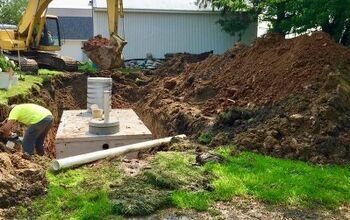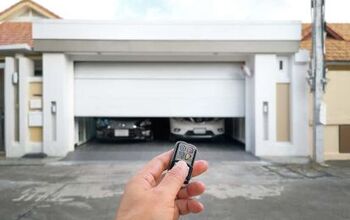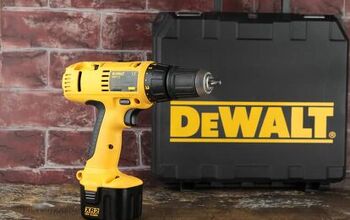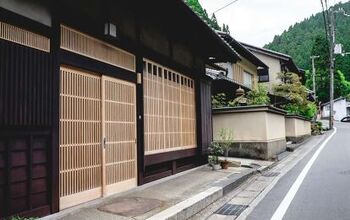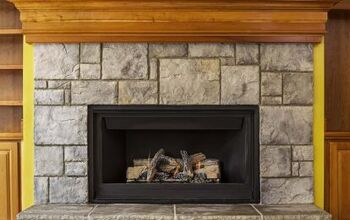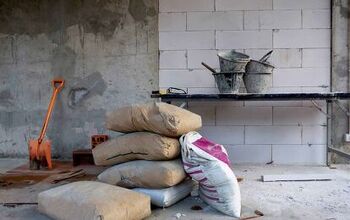How To Build A Sandbox On A Tight Budget

A sandbox provides endless entertainment for kids. These small boxes are a sandy blank slate for imaginative young minds, and they only take up a few square feet of outdoor space. A sandbox is also a home project that any DIY enthusiast can tackle. The key is knowing where to look for the materials, and how to build a sandbox without spending too much money.
To build a sandbox on a budget, you should do all the labor yourself. Use an old tractor tire as a frame, or build a sandbox with treated wood from cheap found at lumber yards and deck supply stores. Use beach or river sand to save on the cost of sand to fill the box. Build a cover to keep the sand clean. This reduces the cost of having to frequently refill the box.
Sandboxes come in all shapes and sizes. There are also many types of sand you can use to fill it. But it’s important you know what materials work great and are budget-friendly, and which ones are cheap and not worth using. Keep reading to learn how to build a sandbox on a tight budget, and where to search for the best materials to build it.
Places To Look For Materials For Your Sandbox
Building a sandbox yourself is the best way to keep costs down. In addition to doing the labor yourself, you should also look for cheap materials. There are many types of sandboxes and sandbox alternatives you can create. You can look online for old tractor tires (a popular sandbox frame), or search for inexpensive treated wood. There are many places where you can find cheap or free building materials. Below is a list of great places to look for this kind of building materials for your DIY sandbox.
- Lumber Yards Or Decking Supply Stores
- Online Marketplaces
- Local Rivers And Beaches
- Home Improvement Stores
- Local Beaches (If Permitted)
Step-By-Step Guide To Building A Sandbox On A Budget
1. Source And Purchase The Materials
The first step to building a sandbox for cheap is to source and procure the materials. As mentioned above, there are several places you can look to find cheap (and even free) materials to make a sandbox.
To build a sandbox, you need materials to make a frame, a tarp or landscaping fabric, plenty of sand, and some household tools like a power drill and a shovel. Once you have these basic and essential items, you are ready to start creating your very own sandy backyard oasis.
2. Choose A Location
Make sure you scope out the perfect location for your sandbox. You should place it near the house and in view from a window, so you can easily keep track of the kids while they play.
In addition to choosing a place near the house and in view, you should also look for an area with some shade. A bit of shade is a great way to keep your kids cool while they play in the sandbox, especially in the summer months.
3. Build The Sandbox Frame
Once you have chosen the perfect location, it is time to take measurements and create your frame. There are tons of different sandbox frames you can choose from. Some simple and cheap frames include using an old giant tractor tire or a simple box frame using treated wood.
When building a frame, make sure you use safe materials. Not all wood that is free is safe to use in a sandbox. Make sure the wood is pressure-treated and sanded. You don’t want your kids coming into the house with splinters every time they play in the sandbox you built.
4. Draw An Outline Of Your Sandbox
Once you have your sandbox frame put together, take its measurements and place it where you want it to go. Trace an outline of the sandbox. This will allow you to easily dig a hole that is the perfect size around the box.
It also helps you visualize the sandbox in that location. It’s a good way to confirm if you have chosen the perfect spot, or if you need to rethink the location a bit.
5. Dig As Much As Necessary
In some cases, you might only need to dig a small hole, large enough to remove the grass. You can also dig for inches or even a full foot. Many times, digging a larger hole helps secure the sandbox. It also helps hide some of the frame.
If, for example, you are using a large tractor tire, you will want to dig a deeper hole, so part of the tall tire is sunken, and it is easy to step into the box.
6. Set The Frame And Line The Box
After you have dug your hole and removed grass or plants from the area, it is time to line spot and insert your sandbox frame. There are several material types you can use for lining a sandbox. Tarps and landscaping fabric are good and cheap options for a sandbox lining.
These liners allow drainage (which is important for keeping your sandbox dry) but also keep weeds at bay. You may never see the sandbox liner, but it is crucial to maintaining a clean sandbox.
7. Fill Your Sandbox With Sand
The next step to building a DIY sandbox for cheap is to fill it with the sand you found. Sand isn’t expensive, but you might be shocked to see how many 50-pound bags of sand you will need. Most sandboxes require 40 to 60 bags of sand.
Therefore, even at a cheap price per bag, the cost of sand can add up. This is why finding quality and inexpensive sand is one of the best ways to keep the costs down on your sandbox. Make sure you don’t choose cheap sand that won’t work well in a sandbox. Some sand can even be toxic to kids. Choose trusted sand varieties for your sandbox.
The Best Sand To Use For A Sandbox
- Beach Sand: A sandbox is meant to mimic playtime at the beach, so it makes sense that beach sand is a great option for a sandbox. It is usually fine grain, natural and non-toxic, and easy to make sand castles with. If you live near the shore, beach sand might be cheap and easy to find. In some areas, you can remove sand from beaches free of charge, but in others, it is not permitted, and you can even receive a hefty fine. Make sure you know your local laws before you bring large buckets to the beach.
- River Sand: The ocean isn’t the only area where you can find quality sand. River sand can be just as great for playing, and it is also usually fine grain and safe for kids to play with.
- Play Sand: There are several brands of sand on the market that are classified as play sand. They are certified safe, and the sand is great to play with. This is a good safe option, but also usually the most expensive.
8. Landscape Around The Sandbox To Keep It Clean
Once you have filled your sandbox, you are almost ready to let your kids play and have fun, but first, you need to tidy things up. There is bound to be a bit of dirt around the sandbox. Fill any bare spots with grass, mulch, or other landscaping. This will prevent the area from getting muddy in the future, and it will look nicer.
9. Add A Cover To Avoid Making It An Outdoor Litter Box
A sandbox cover is not mandatory, and it might cost a little more to add one, but it can save money in the long run. If you have neighborhood cats or other mammals, you might find that these furry wild animals use your sandbox as a litter box.
This can cause you to have to constantly change the sand, which gets expensive fast. To keep your sand in pristine condition for longer, make a sandbox cover.
Final Notes On Building A Sandbox On A Tight Budget
A sandbox is a great way to bring the beach to your backyard, especially if you have young children. Sandboxes are fairly easy to build yourself, but you should look for cheap building materials to avoid paying too much for this DIY project. You can find discounted treated wood, or even use an old tractor tire. Look for cheap natural sand like river sand or beach sand, as this will help keep costs down.
Related Guides:

Tom Gaffey is an expert writer who currently resides in Washington D.C. Tom has a passion for real estate and home improvement writing, as well as travel and lifestyle writing. He lived the last twelve years in Hawaii where he worked closely with luxury resorts and event planners, mastering his knowledge of aesthetics and luxury products. This is where he found his passion for home improvement and a keen interest in DIY projects. Currently, Tom resides in Washington D.C, and also working on his debut fiction novel.
More by Tom Gaffey











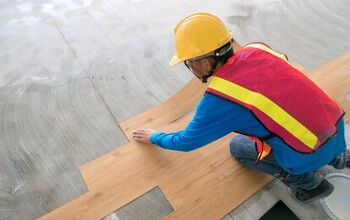
![10 Best Zero Turn Mowers – [2022 Reviews & Ultimate Buyer's Guide]](https://cdn-fastly.upgradedhome.com/media/2023/07/31/9070522/10-best-zero-turn-mowers-2022-reviews-ultimate-buyer-s-guide.jpg?size=350x220)




![10 Most Dangerous Neighborhoods in Baltimore [Updated]](https://cdn-fastly.upgradedhome.com/media/2023/07/31/9075655/10-most-dangerous-neighborhoods-in-baltimore-updated.jpg?size=350x220)

